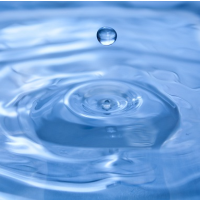State Tanks on Reaching Governor’s Goal of 20% Reduction in Water Use

When Governor Jerry Brown declared a drought emergency on January 17, he called on Californians to voluntarily reduce their water usage by 20%. So how’s that going?
Not too well, according to survey results (pdf) released last week by the State Water Resources Control Board (SWB). Only 270 of the 443 urban water suppliers sent the survey bothered to respond and 42 of them submitted incomplete data.
Based on their self-reporting, water use was down just 5% statewide through May this year, compared to a three-year baseline from January-May 2011 to 2013. The responses covered 25 million retail customers.
The worst offender on the Water Board’s regional list was the Central Coast, which showed zero decline in the face of California’s third year of drought, groundwater issues and crumbling water infrastructure. The Colorado River area is hardly better at 1%, followed by North Lahontan, San Francisco Bay and North Coast, all around 2%.
Sacramento River area has done the best, lopping 10% off its water usage, followed by the San Joaquin River area at 7%, South Lahontan and South Coast at 5%, and Tulare Lake at 4%.
The reductions are not necessarily a measure of civic-mindedness and internal discipline. The ever-present water wars in California have intensified as a scarce resource becomes much scarcer. In the early going, some areas are better protected by larger, stronger water districts and suppliers as the political landscape begins to shift.
Fifty-three percent of urban water suppliers have formally invoked their water shortage plans and 30% have put mandatory cuts in place, like restrictions on outdoor irrigation, vehicle washing and filling pools. But the effects of the drought have been very uneven across the state.
Forty-four percent of the survey respondents reported no water shortage. Shortage or no shortage, a recent poll (pdf) by the Los Angeles Times and USC Dornsife found 40% of Californians thought the drought was a “crisis” and 48% thought it was a major problem.
However, they didn’t want to do much about it. Only 25% strongly supported a mandatory cut of 20%, keeping pace with the governor’s imperative. A bare majority, 55%, support voluntary cuts that high. But so far they haven’t exercised that option.
There were hints in the survey that reductions may be gaining momentum, as the month of May measured by itself is down 25% from the Mays of 2011-2013. The survey also sought feedback in anticipation of the state drawing up mandatory restrictions in the near future.
The Water Board’s first foray into gathering timely information on the state’s water usage was criticized by some who questioned what sort of conclusions can be drawn from self-reported responses to a survey ignored by 39% of those queried. Thirty-one percent of the respondents failed to answer what their shortage status was, a seemingly salient piece of information.
But the time is fast approaching when hard decisions will be have to be made in Sacramento on how urban consumers will conserve their shrinking supply while agricultural interests, which use at least 80% of the state’s water, figure out how to deal with theirs.
–Ken Broder
To Learn More:
Report: California Has a Long Way to Go on Water Conservation (by Matt Weiser, Sacramento Bee)
Amid Drought, Bay Area Water Use down Just 2 Percent (by Kurtis Alexander, San Francisco Chronicle)
Poll Finds People Care About the Drought but Aren’t Inclined to Do Much About It (by Ken Broder, AllGov California)
Water Use Declines 5 Percent Statewide (State Water Resources Control Board)
Urban Water Supplier Drought Response Survey: Results and Observations (State Water Resources Control Board) (pdf)
Fact Sheet (State Water Resources Control Board) (pdf)
- Top Stories
- Controversies
- Where is the Money Going?
- California and the Nation
- Appointments and Resignations
- Unusual News
- Latest News
- California Forbids U.S. Immigration Agents from Pretending to be Police
- California Lawmakers Urged to Strip “Self-Dealing” Tax Board of Its Duties
- Big Oil’s Grip on California
- Santa Cruz Police See Homeland Security Betrayal in Use of Gang Roundup as Cover for Immigration Raid
- Oil Companies Face Deadline to Stop Polluting California Groundwater





